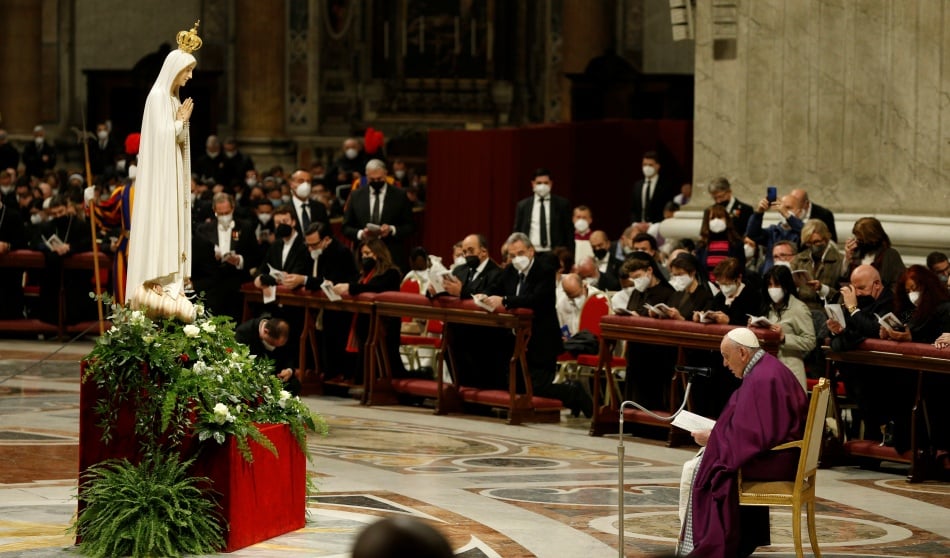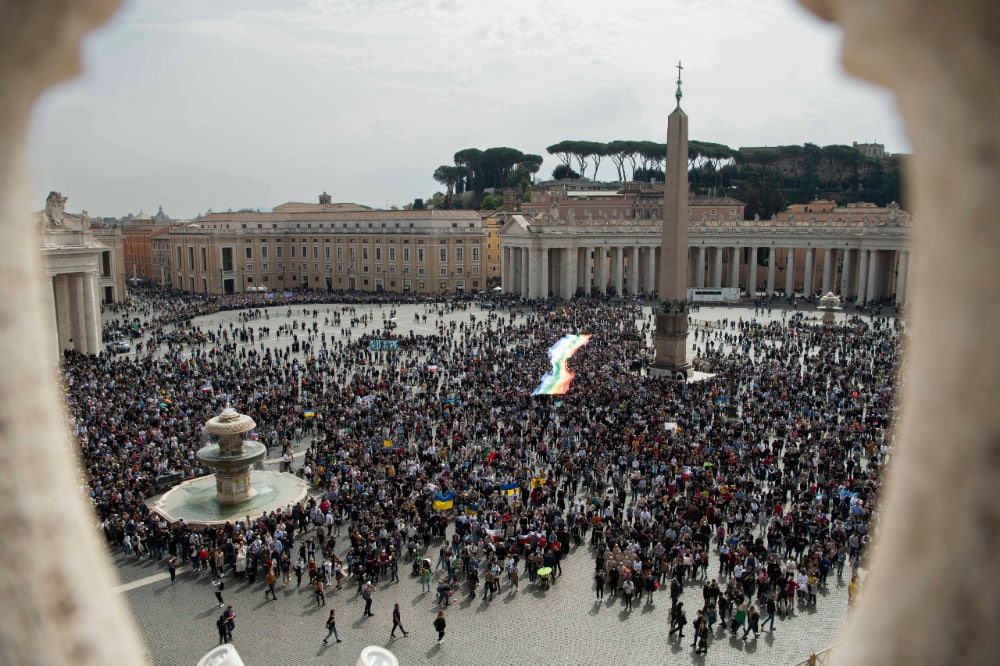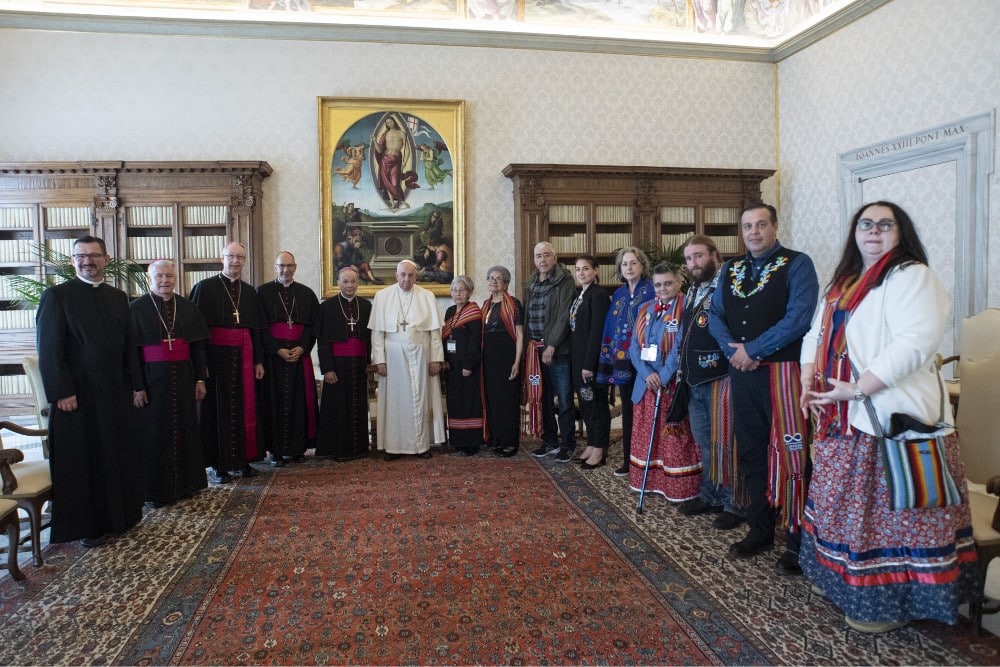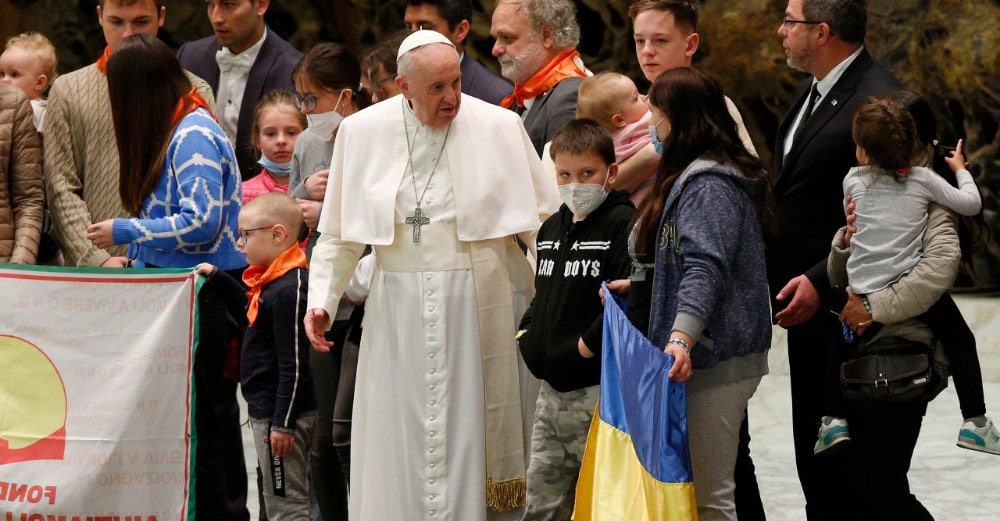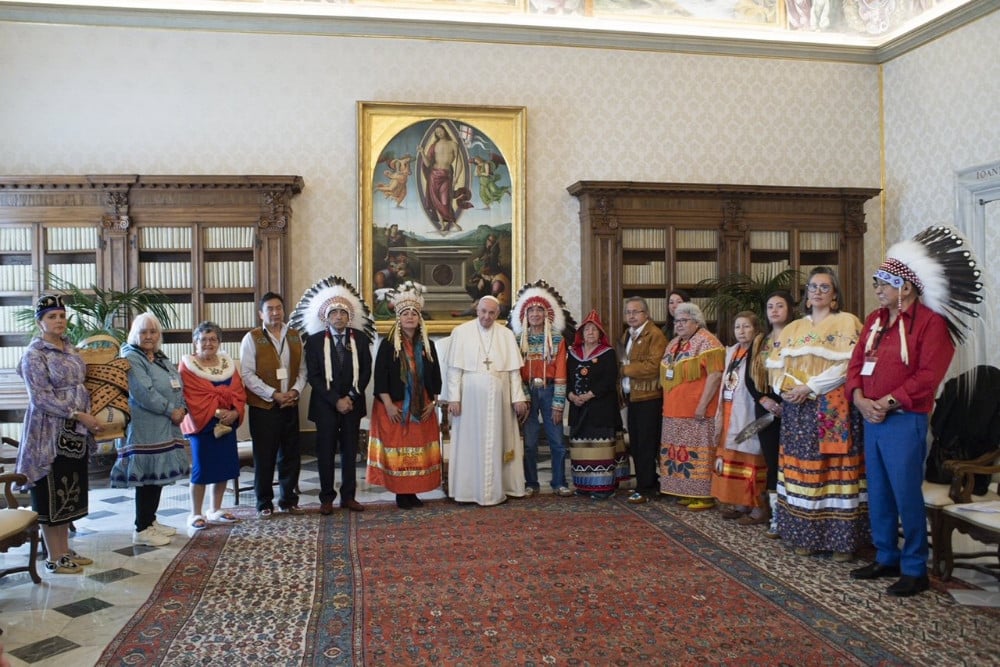On Friday, the solemnity of the Annunciation, Pope Francis carried out a solemn act of consecration to the Immaculate Heart of Mary. The core of the consecration was expressed in these words:
“Therefore, Mother of God and our Mother, to your Immaculate Heart we solemnly entrust and consecrate ourselves, the Church and all humanity, especially Russia and Ukraine. Accept this act that we carry out with confidence and love. Grant that war may end and peace spread throughout the world. The ‘fiat’ that arose from your heart opened the doors of history to the Prince of Peace. We trust that, through your heart, peace will dawn once more. To you we consecrate the future of the whole human family, the needs and expectations of every people, the anxieties and hopes of the world.”
There are some important points to note. Russia and Ukraine were consecrated in a special way, but the Church and all of humanity were also entrusted and consecrated to the Immaculate Heart of Mary. The consecration had a special focus on the ending of the war between Russia and Ukraine, but “the future of the whole human family” was also consecrated to Mary’s Immaculate Heart. The consecration took place on the solemnity of the Annunciation, which celebrates Mary’s assent — her “fiat” — that allowed the Word of God, the Prince of Peace, to enter into human history. The consecration also had a special connection to the 1917 apparitions of Fátima. This was shown by the simultaneous act of consecration carried out by Cardinal Konrad Krajewski, the papal almoner, at the Shrine of Fátima. It was also manifested by having the consecration take place within the context of a penance service. Indeed, the prayer of consecration has a deeply penitential character. This is significant, because the call to penance and reparation is a central theme of the Fátima apparitions.
What is the significance of an act of consecration?
The word “consecration” derives from the Latin word consecrare — sometimes spelled consacrare — which means to dedicate or set apart as sacred. The covenant God establishes between himself and the people of Israel is a type of consecration, because the covenant sets Israel apart as “a kingdom of priests, a holy nation” (Ex 19:6).
Some theologians believe that “entrustment” to Mary is preferred, because consecration in the strict sense should only be made to God or used in reference to sacramental consecrations. A solemn entrustment to Mary, however, takes on a sacred character, and the word “consecrate” communicates better the quality of the sacred. In its 2002 Directory on Popular Piety and the Liturgy, the Congregation for Divine Worship and the Discipline of the Sacraments notes that “the history of Marian devotion contains many examples of personal or collective acts of ‘consecration or entrustment to the Blessed Virgin Mary’ (oblatio, servitus, commendatio, dedicatio),” and “the Roman pontiffs have frequently expressed appreciation for the pious practice of ‘consecration to the Blessed Virgin Mary’ and the formulas publicly used by them are well known” (No. 204). In Friday’s act of consecration, Pope Francis used “entrust and consecrate” to show the importance of both expressions.
Personal and collective consecrations to Mary
By baptism, we are all dedicated or consecrated to God. In the history of the Church, various personal consecrations have emerged. In addition to the personal consecrations of virgins and religious to God, there were examples of personal dedications or entrustments to Mary. As early as the fifth and sixth centuries, some members of the faithful began to use the phrase, “servant of Mary” (servus Mariae), to indicate their special dedication or consecration to the Virgin Mary, St. Ildefonsus of Toledo (c. 607-67) dedicated himself to Mary as her servant (servus), and St. John of Damascus (c. 657-749) — in his first homily on the Dormition — stated that “we consecrate our minds, our souls, our bodies” to the Mother of God.”
In the Middle Ages, various monks, such as St. Bernard of Clairvaux (c. 1090-1153) “commended” themselves in a special way to the Blessed Virgin, and in the 13th century, the religious order of the Servants of Mary — the Servites — was established. In the 16th and 17th centuries, various expressions of holy servitude or slavery to Jesus and Mary began to emerge, first in Spain and then in France under Cardinal Pierre de Bérulle (1575-1629). The Christocentric character of servitude to Mary was highlighted by St. John Eudes (1601-80) and especially by St. Louis de Montfort (1673-1716), who understood consecration to Mary as the perfect renewal of our baptismal vows and the most secure means of union with Christ.
Collective consecrations to Mary emerged in the Middle Ages. St. Stephen (c. 975-1038) consecrated Hungary to the Virgin Mary, and King Richard II in 1381 consecrated England to the Mother of God as “her Dowry.” Collective papal consecrations to the Immaculate Heart of Mary followed the example of Leo XIII’s 1899 consecration of the world to the Sacred Heart of Jesus. He carried out this consecration at the urging of Blessed Maria of the Divine Heart (1863-99) to whom Our Lord appeared asking for the world to be consecrated to his Sacred Heart.
Fátima and the Blessed Mother
In her July 13, 1917, apparition at Fátima, the Blessed Mother told the shepherd children that she would come to ask for the consecration of Russia to her Immaculate Heart and communions of reparation on First Saturdays. She spoke of the errors of Russia being spread throughout the world “causing wars and persecutions of the Church.” She told the children that if her requests were heeded, “Russia will be converted, and there will be peace.” She consoled them with the promise that “in the end, my Immaculate Heart will triumph.” In 1929, the Blessed Virgin appeared to Sister Lucia (1907-2005) and told her that the time had come for the consecration of Russia to her Immaculate Heart. Our Lady said the consecration is to be done by the Holy Father in union with the bishops of the world.
On Oct. 31, 1942 — with the encouragement of Blessed Alexandrina Maria da Costa (1904-55) — Pope Pius XII consecrated the world to the Immaculate Heart. On July 7, 1952, he consecrated the Russian people to the Immaculate Heart of Mary via his apostolic letter Sacro Vergente Anno.
On Nov. 21, 1964, Pope St. Paul VI renewed the consecration of the world to the Immaculate Heart of Mary in his address at the end of the third session of the Second Vatican Council. On May 13, 1982 — a year following the attempt on his life — John Paul II consecrated the world again to the Immaculate Heart of Mary. Sister Lucia of Fátima, however, made it clear that Our Lady wished Russia to be consecrated to her Immaculate Heart by the Roman Pontiff in communion with the bishops of the whole world. Pope St. John Paul II carried out this consecration on March 25, 1984. Sister Lucia personally confirmed that this act of consecration corresponded to what Our Lady wished when she wrote: “Yes, it has been done just as Our Lady asked, on 25 March 1984.”
Some have claimed that John Paul II failed to carry out the consecration of Russia properly because he did not pronounce the name of “Russia” explicitly. It is believed that he did not utter the name “Russia” audibly because of concerns that this would provoke increased tensions with the Soviet Union and the Russian Orthodox Church. He did, though, say, “In a special way we entrust and consecrate to you those individuals and nations which particularly need to be thus entrusted and consecrated.” It is widely thought that he uttered the name of Russia either quietly or in his heart at this moment of his March 25, 1984, consecration.
Mother of all
We need to keep in mind that Our Lady of Fátima did not provide a text for the consecration of Russia to her Immaculate Heart. She never specified that consecration of Russia could not be carried out together with the consecration of humanity, the Church and other nations. She only asked that Russia be consecrated in communion with the bishops of the world. Pope St. John Paul II always insisted that he carried out the consecration of Russia properly, and Sister Lucia confirmed this. To believe otherwise is to cast doubt on the honesty of these two holy people.
Friday’s consecration of humanity, the Church, Russia and Ukraine to the Immaculate Heart of Mary was carried out by Pope Francis after calling upon his brother bishops, priests and all of the faithful to unite with him in the consecration. The explicit mention of “Russia” should help silence those who still claim the consecration requested by Our Lady of Fátima has not been fulfilled. The Holy Father asked all his brother bishops to join him in this solemn act of consecration.
In his homily prior to the consecration, he said that a consecration is not a “magical formula.” We must keep this in mind. But just as the consecration of 1984 helped to bring about the fall of Communism in Eastern Europe, we now hope that the consecration of 2022 will help to bring peace to Ukraine and a deeper conversion toward the Prince of Peace. Pope Francis’ consecration reminds us of the power of Our Lady’s intercession. It also reminds us of our own need for a more profound trust in our merciful Mother. She is the New Eve and the Mother of all peoples because she is the Mother of the living (cf. Gn 3:20 and Lumen Gentium, No. 56).

